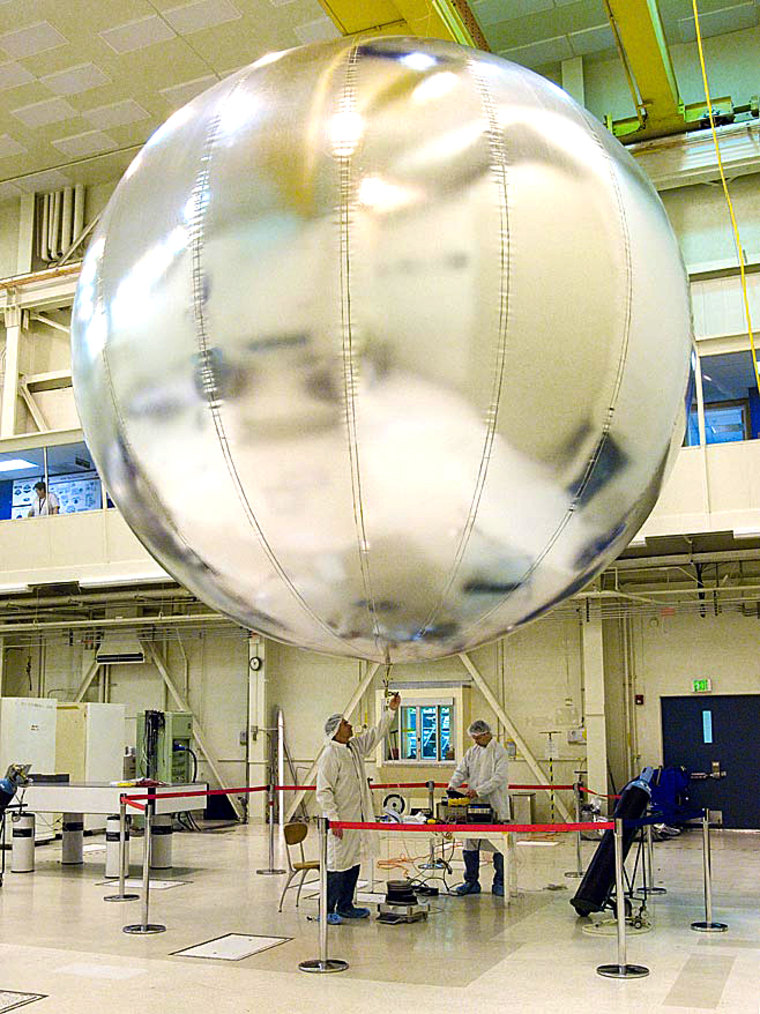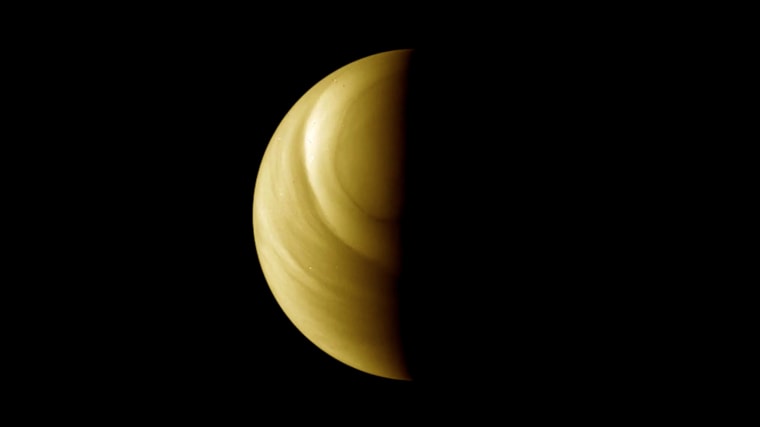Venus may be our closest neighbor in the solar system, but we still have a lot to learn about the second rock from the sun.
Now, a group of NASA scientists is pushing hard for a new expedition to Venus — an unmanned mission that would use a huge, instrument-laden helium balloon floating in the superheated Venusian atmosphere to study the planet and possibly search for alien life.
The mission, which has been proposed before but was recently bolstered by a 2018 study that assessed the technologies available to support it, would be the space agency's first to visit the planet since 1989.
“We think Venus’ time has come,” said Jim Cutts, a program manager in the Solar System Exploration Directorate at the Jet Propulsion Laboratory in Pasadena, California and leader of the 2018 study. “Venus is partly forgotten because it’s difficult to explore, but the key thing that has happened to turn things around is the development of these new technologies.”
Venus lies farther from the sun than Mercury, the innermost planet, but its heat-trapping atmosphere makes it the hottest of all planets. Temperatures on the Venusian surface can reach 880 degrees Fahrenheit, meaning it's all but impossible for conventional spacecraft to explore it.
Conditions are more hospitable 30 miles above the surface. In fact, temperatures in this region of the atmosphere are much like those on Earth — “similar conditions to Miami, Florida in summertime,” said Kevin Baines, a planetary scientist at the JPL and the University of Wisconsin-Madison.
It’s in this part of Venus’ atmosphere that Baines and his colleagues want to unleash the helium balloon. “You can do a world tour of the planet without using any propellers or fuel to power it,” Baines said. “The winds are so powerful on Venus that the whole atmosphere is a giant jetstream.”
Under the plan, the mission spacecraft would reach Venus after a six-month journey. Upon arrival, Baines said, the spacecraft would use an onboard helium tank to inflate the 25-foot-diameter balloon and then release it.

The balloon would be carried by winds that circulate at speeds of up to 200 miles per hour. At that speed, it would circle the planet once every five or six days over the course of a monthslong mission. Along the way, it would collect data using its suite of science instruments.
Among the instruments being considered for such a mission are a sensor that would detect seismic activity based on the telltale "ripples" they create in the atmosphere. “We’re looking for these very low-frequency pressure waves in the atmosphere," Siddharth Krishnamoorthy, a postdoctoral associate at the JPL, said.
Other researchers are interested in searching for life on Venus — an idea that Cutts and Baines said is gaining currency within the science community. One proposal suggests using instruments to sample the chemistry of Venus' clouds to look for amino acids or other building blocks of life.
Venus is about the same size as Earth, and scientists think it harbored liquid-water oceans on its surface early in its history. Since life emerged on Earth under similar conditions, some researchers wonder if something similar occurred on Venus.
“Could there be evidence of it?" Cutts said of life on Venus. "Possibly. Another possibility — though it’s an unlikely one — is life may have retreated to the one habitable zone on Venus: in the clouds, where temperatures are similar to those on Earth."
If the balloon mission is approved by NASA. it could join the space agency's roster of science missions slated to launch between 2023 and 2032. Baines, who has been involved with proposed missions to Venus since 2004, said such a balloon expedition could cost about $450 million.
The idea of exploring Venus with a high-altitude balloon isn't new. In 1984, the then-Soviet Union sent twin probes, known as Vega 1 and 2, to Venus, where they dropped a lander and two balloons that floated through the planet’s atmosphere for about 48 hours.
NASA’s last mission to Venus was the Magellan spacecraft, which launched in 1989 and spent four years mapping the planet's surface. The Magellan mission ended in 1994, when the robotic space probe was purposefully crashed into the planet.


